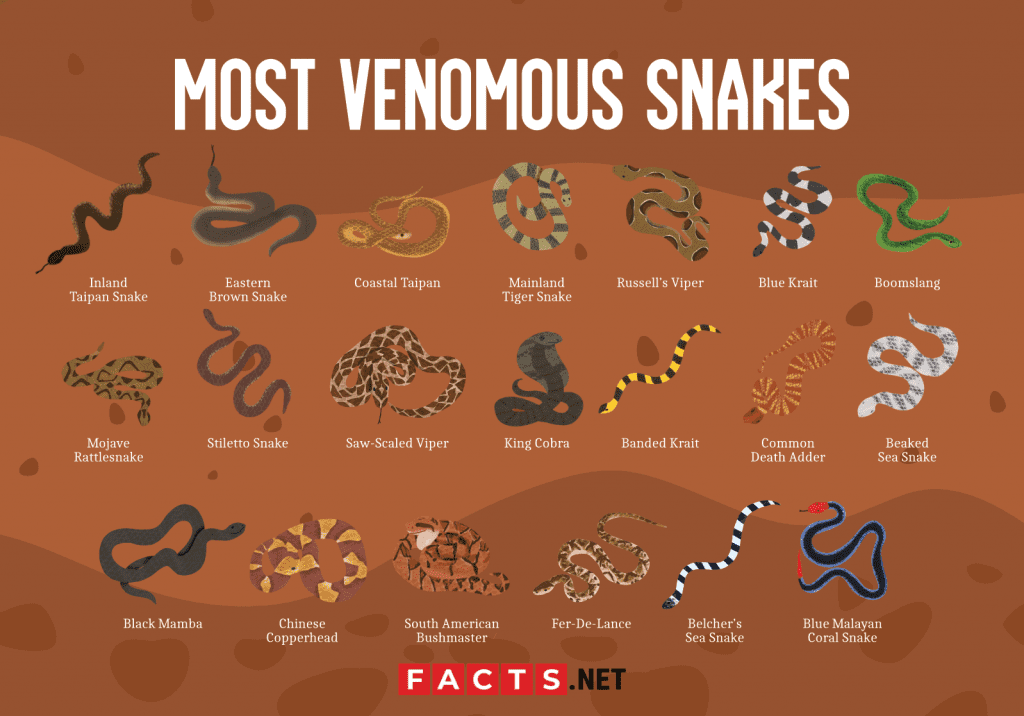Venomous Snakes of Australia: A Complete List & Facts
Australia is famed for its stunning landscapes, unique wildlife, and, notably, its diverse array of venomous snakes. Understanding these serpents is essential for enthusiasts, hikers, and residents alike. This article delves into the distinctive venomous snakes inhabiting the Australian continent, providing a comprehensive overview of their characteristics, habitats, and the dangers they may pose.
Australia is home to several species of venomous snakes that instill both fascination and fear. The alarming reality is that eight of the world’s ten most venomous snakes can be found in Australia. Its unique ecology and climate conspire to create an environment where these remarkable creatures thrive. For anyone venturing into the wild expanses of the Australian landscape, familiarizing oneself with these serpents can mean the difference between admiration and tragedy.
Each species possesses a unique combination of venom potency, behavioral traits, and habitat preferences. Here’s a closer look at some of the most notorious residents of the Australian snake family.
The Eastern Brown Snake is widely regarded as one of the deadliest serpents globally, with a venom that can cause severe neurotoxic symptoms in humans. This highly aggressive snake is predominantly found in populated areas, increasing the likelihood of encounters. Known for its slender build and distinctive coloration, ranging from light brown to a darker hue, the Eastern Brown Snake can strike with remarkable speed. Its adaptability thrives in urban environments, where it often preys on rodents.
Next, we encounter the Inland Taipan, often dubbed the “fierce snake.” It is celebrated for having the most toxic venom of any snake species, capable of causing death within hours if untreated. Although it is reclusive and prefers remote bushland, the threat it poses cannot be underestimated. Its dark brownish-yellow scales enable it to blend seamlessly into the arid environment of the Australian outback, making detection by unsuspecting prey challenging.
The Coastal Taipan is another prominent venomous snake, known for its agility and potent venom that can lead to rapid neurotoxic effects. Found along the eastern coastline, this snake is recognized for its slender and elongated body, adorned with a glossy, olive-brown hue. Unlike the Inland Taipan, the Coastal Taipan is more inclined to be seen, especially when disturbed. Its venom, while lethal, acts as a reminder of the intricate balance of nature and the importance of respecting wildlife.
Shifting focus to the Tiger Snake, a creature known for its bold patterns and defensive nature. Found primarily in coastal areas and wetlands, Tiger Snakes are infamous for their tenacity when threatened. They possess both cytotoxic and neurotoxic venom, capable of causing severe injury or even death. Their striking bands of yellow or white against a darker background add to their distinctive appearance, making them a subject of intrigue and caution among enthusiasts.
In contrast, we have the Western Brown Snake, a less aggressive yet equally dangerous species. Preferring inland areas, this snake exhibits a fascinating variation in color, often appearing in shades of brown and black. Western Brown Snakes are known to display a defensive posture when threatened but generally prefer to flee rather than engage. Their quick retreats are countered by their potent venom, highlighting the predator-prey dynamics inherent in the Australian ecosystem.
Understanding the behavior and ecology of venomous snakes is essential for those venturing into their habitats. While encounters can be dangerous, awareness can mitigate risks significantly. Most snakes will avoid human interaction, preferring to retreat rather than confront an intruder. Real knowledge lies in recognizing their presence, understanding their habitats, and respecting their roles in the ecosystem.
In conclusion, the venomous snakes of Australia constitute a critical aspect of the continent’s biodiversity. Their potent venom and unique behaviors invite both fascination and respect. Whether an avid adventurer, a curious naturalist, or simply a concerned resident, understanding these remarkable creatures not only enhances survival chances but fosters a deeper connection with the intricate web of life that thrives across Australia’s unique landscapes.
You May Also Like
Best Fish to Catch in Australia: A Guide for Anglers
Australia boasts an extraordinary diversity of fish species, making it …
Emily Bay Norfolk Island: A Hidden Gem in the Pacific
Emily Bay, a picturesque enclave nestled on the sun-kissed shores of …
Holidays on August 23: Global Festivities & Observances
August 23 is a date that carries a bouquet of cultural significance …





